11 Incredible Places for Whale Watching in California
Take a trip to these top whale-watching destinations to spot everything from orcas and blue whales to humpbacks and gray whales.

Here are the foods dentists do—and don't—want you to eat for better dental hygiene.
If you are anything like me, you dread the biannual visit to the dentist. But let’s be honest: You never actually make it to both appointments. From the poking and prodding, to the invasive questions about oral hygiene, to the insistence that you must floss more (or better), to the awkward angle at which you have to lay back with your mouth wide open, nothing about going to the dentist screams fun. It is, however, one of those unavoidable disturbances like tax season that we muster up the courage for and power through. Since going to the dentist is necessary, there are some foods you can eat, things you can avoid, and habits you can practice in an effort to make the visits less painful (and expensive).
Before jumping right into the nitty gritty, it is helpful to have some knowledge about tooth structure in order to understand what is being affected by various eating and brushing activities. The crown refers to the outside of the tooth and is the entire portion of the tooth you can see. The crown is covered in enamel—the protective outer layer of the tooth made from the hardest material in the human body—which acts as a barrier but can be damaged by the things we eat and drink. Beneath the enamel is dentin, which runs under the gums to meet up with the jaw bone. Dentin is both softer and drastically less brittle than enamel. Inside of this layer is the pulp. Pulp makes up the middle of the tooth and holds the blood and nerve endings.
Toothaches occur when the tooth begins to decay and wears away to either the dentin or the pulp, serving as a warning sign to schedule a dentist appointment to avoid further damage.
Along with understanding the physical aspects of the teeth, it is crucial to remember that the mouth carries a pH ranging from about 6.2 to 7.6, and any drastic changes to the pH level affect the teeth. The pH scale runs from 1 for basic solutions to 14 for incredibly acidic solutions, with water measuring in around 7. While the roots can only handle pH levels above 6, the protective enamel can withstand pH levels of around 5 or 5.5 before the acid begins to eat away at teeth. When the pH drops too low, the healthy bacteria in the mouth die and the cavity-causing bacteria thrive, leading to infection and cavities.
Now that you understand the composition of teeth a bit better, it’s time to explore good and bad foods for dental hygiene.
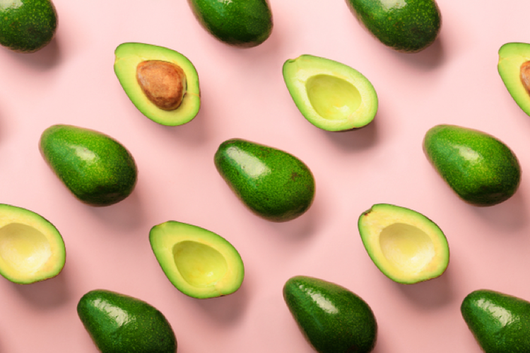

Does your business rank among the best in California?
nominate a businessLearn more about our selection criteria and vetting process.
Foods with high levels of fiber help to keep teeth and gums clean and increase the production of saliva, which contains traces of phosphate and calcium that help to remineralize teeth that have been negatively affected by acid. Kale, collard greens, and spinach are also high in vitamin K, which aids in strengthening teeth, so load up on these nutritious greens.
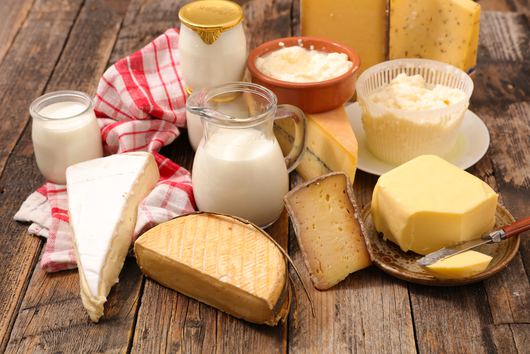
Cheese, milk, plain yogurt, and other dairy products have high levels of calcium, which keeps teeth strong. Since teeth are comprised of the same tissue as bones, dairy helps to strengthen them and prevent bone loss. As an additional benefit, dairy products have a neutral pH that hovers around 7, which aids the mouth in maintaining a proper pH level.
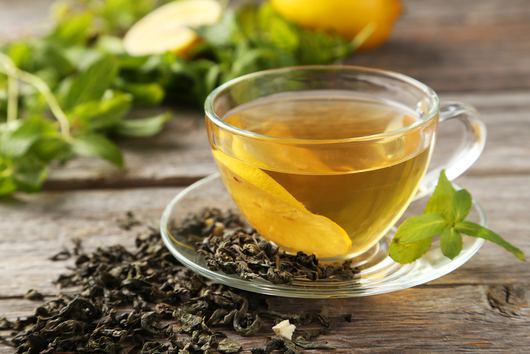
Green tea is a miraculous beverage. Not only does it lower the acidity level in your mouth (which helps slow down the erosion on enamel), but it also has anti-inflammatory properties (which prevent gums from becoming agitated) and antimicrobial properties (which kill off bad breath–causing bacteria). While the beverage does contain tannins that dry out the mouth, its benefits outweigh the downfalls, especially when followed up with a healthy serving of water.
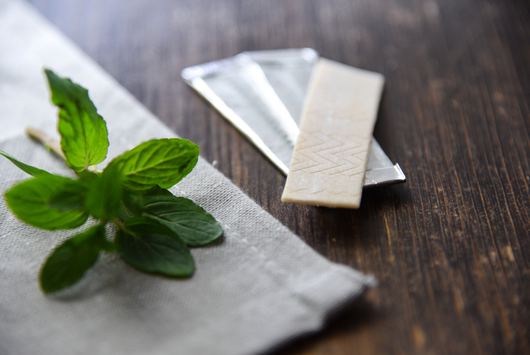
Chewing sugarless gum, especially after meals and snacks, can increase the amount of saliva in the mouth and flush out any remaining food particles. By avoiding the sugar of traditional gum, the benefits are not compromised by introducing additional contaminants.
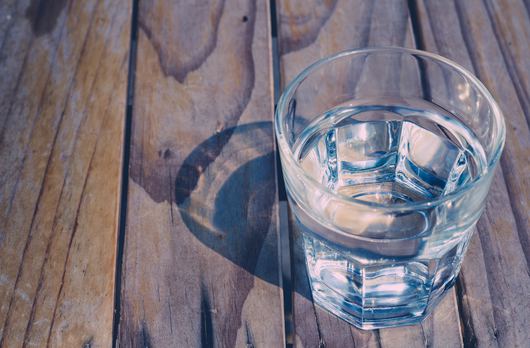
Fluoride comes from a variety of sources and pairs with calcium and phosphate on the surface of teeth to form fluorapatite, which is stronger and more resilient against tooth decay. Fluoride is found in drinking water and anything you put drinking water into, such as dehydrated soups and powdered drinks, as well as in some mouthwashes and toothpastes. Fluoride can help to guard against the unavoidable substances that dry out the mouth, too, making it an incredibly beneficial addition to your regular routine.
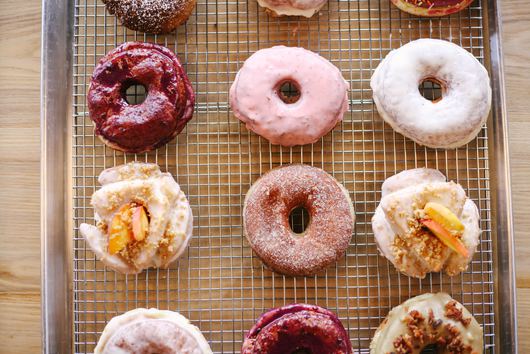
Particularly sticky sweets can latch onto the surface of teeth and wear away at the enamel. If you must eat these treats, do so with your meal; when you eat, there is a larger production of saliva in the mouth that can help wash away the potentially harmful ingredients and protect against acid. Similarly, if you are popping sugary cough drops or mints into your mouth, make sure to allow time between them so saliva can return to a neutral state. While artificial sugar is undoubtedly bad for teeth, natural sugar alcohols (such as those in fruits and vegetables) do not lead to an increase in acidity or a change in pH. This means they do not promote tooth decay and are a great alternative to their sugar-rich counterparts.
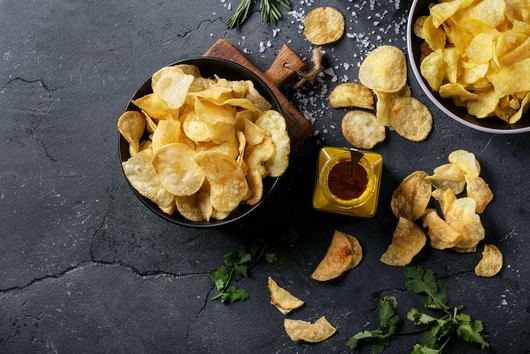
Items like soft bread, corn on the cob, popcorn, and chips can easily get stuck between teeth, making it necessary to floss soon after eating them. If left in the mouth, they can cause bad breath and, eventually, cavities.
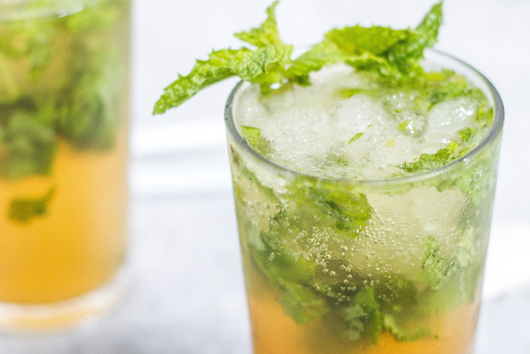
Soft drinks are particularly harmful because of their high sugar content; however, even sparkling water can wear away tooth enamel due to its high levels of phosphoric and citric acids. Though it can be tempting to brush your teeth directly after eating or drinking sugary substances, dentists strongly urge you to wait 30 to 60 minutes before picking up the toothpaste. Oral bacteria use the sugars to make acid, which can linger anywhere from 15 to 30 minutes before saliva steps in to raise the pH and remineralize the affected areas. If brushing occurs while the mouth is still very acidic, it effectively brushes away the softened enamel, so it is best to wait.
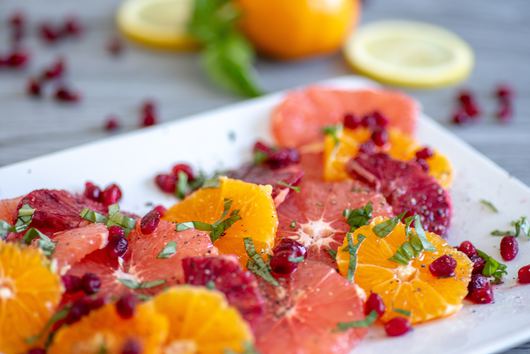
Eating citrus regularly, especially when it is consumed multiple times in a day, can seriously erode enamel. If you are going to consume citrus, it is more beneficial to eat the whole fruit rather than drinking the juice, as there is often extra sugar added to commercially made juices. Stick to less acidic options—like mangoes, apples, and bananas—for less damage, or follow up your acid intake with a glass of milk or a piece of chocolate, which can both neutralize the pH by adding calcium or phosphorus to the mouth and negating the detrimental effects.

While many rely on coffee to make it through the day, it can create yellow or brown stains on the surface of teeth. You don’t have to give up coffee, but there are a few things that reduce the likelihood of damaging those pearly whites. Adding real milk—not plant-based milk—neutralizes the pH and allows the protein to bind to the polyphenols in coffee, helping them to move on instead of sticking to teeth. Drinking coffee through a straw is another way to move these polyphenols out of the mouth faster so they do not have the chance to stick to the surface of teeth. Other methods include drinking coffee with less caffeine, using a better toothbrush, swishing milk or water in your mouth right after drinking coffee, and brushing about an hour after you have finished.
While there are many things to keep in mind when choosing what to eat and how to care for your teeth, make sure to stick to the basics: Drink plenty of water, brush twice per day, and floss at least once daily, paying extra attention to the curves and grooves to remove any lingering debris. Once you make oral hygiene a priority and dental office visits a regular part of your routine, you may come to find that the dentist isn’t so bad after all.


Take a trip to these top whale-watching destinations to spot everything from orcas and blue whales to humpbacks and gray whales.
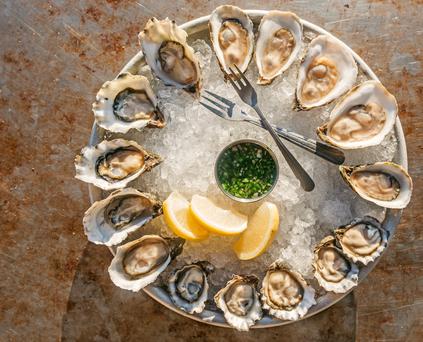
From fresh oysters and clam chowder to avocado toast and garlic ice cream, here are California's famous foods.

Here's our guide to the best places to view a full moon in San Francisco. Enjoy cosmic wonders from our favorite vantage points.

If you're feeling adventurous then take a trip to one of California's strange and memorable dining experiences.

